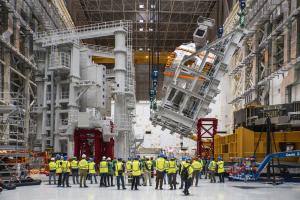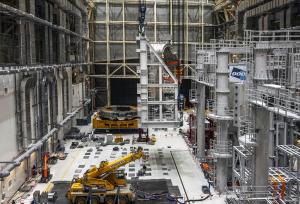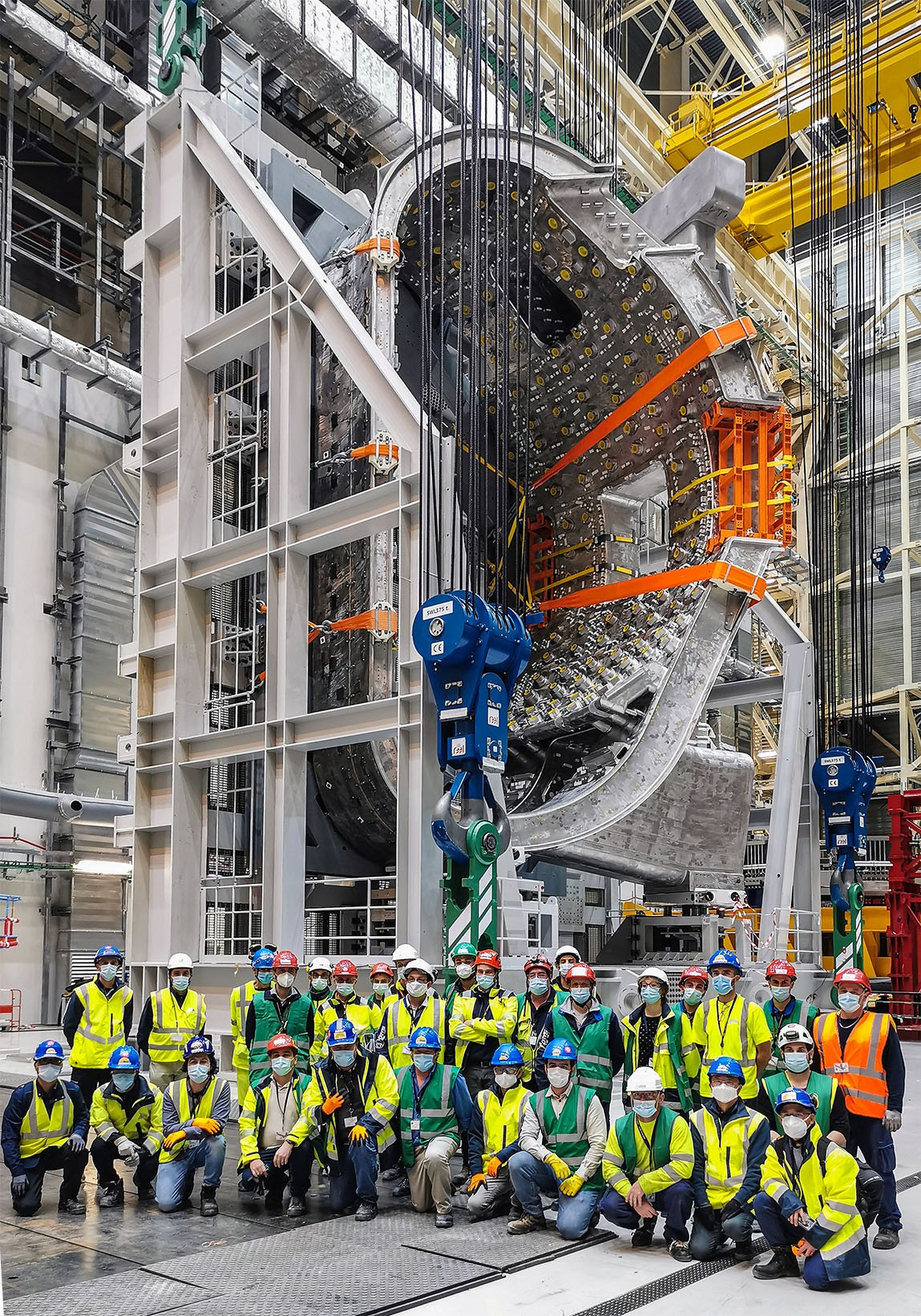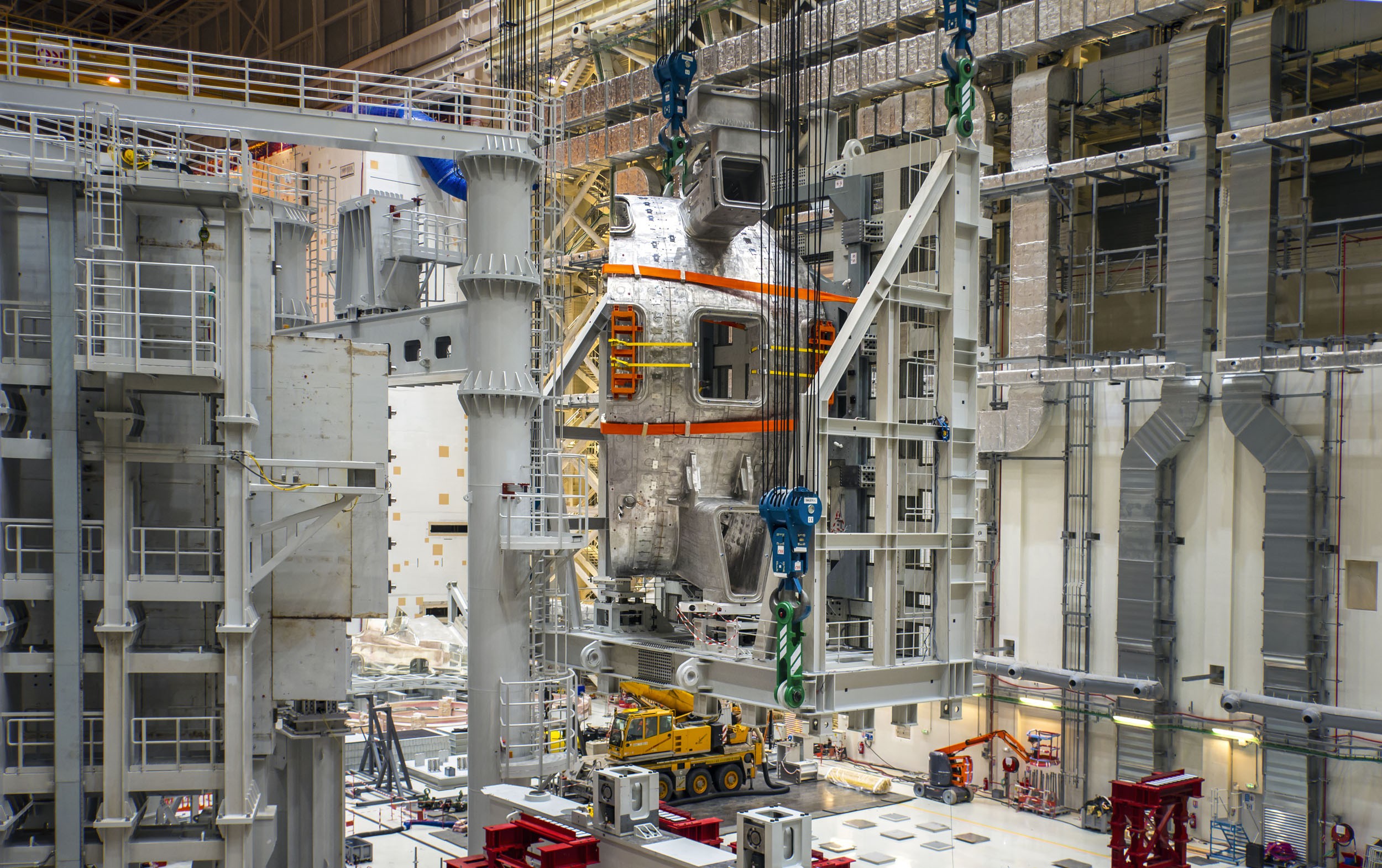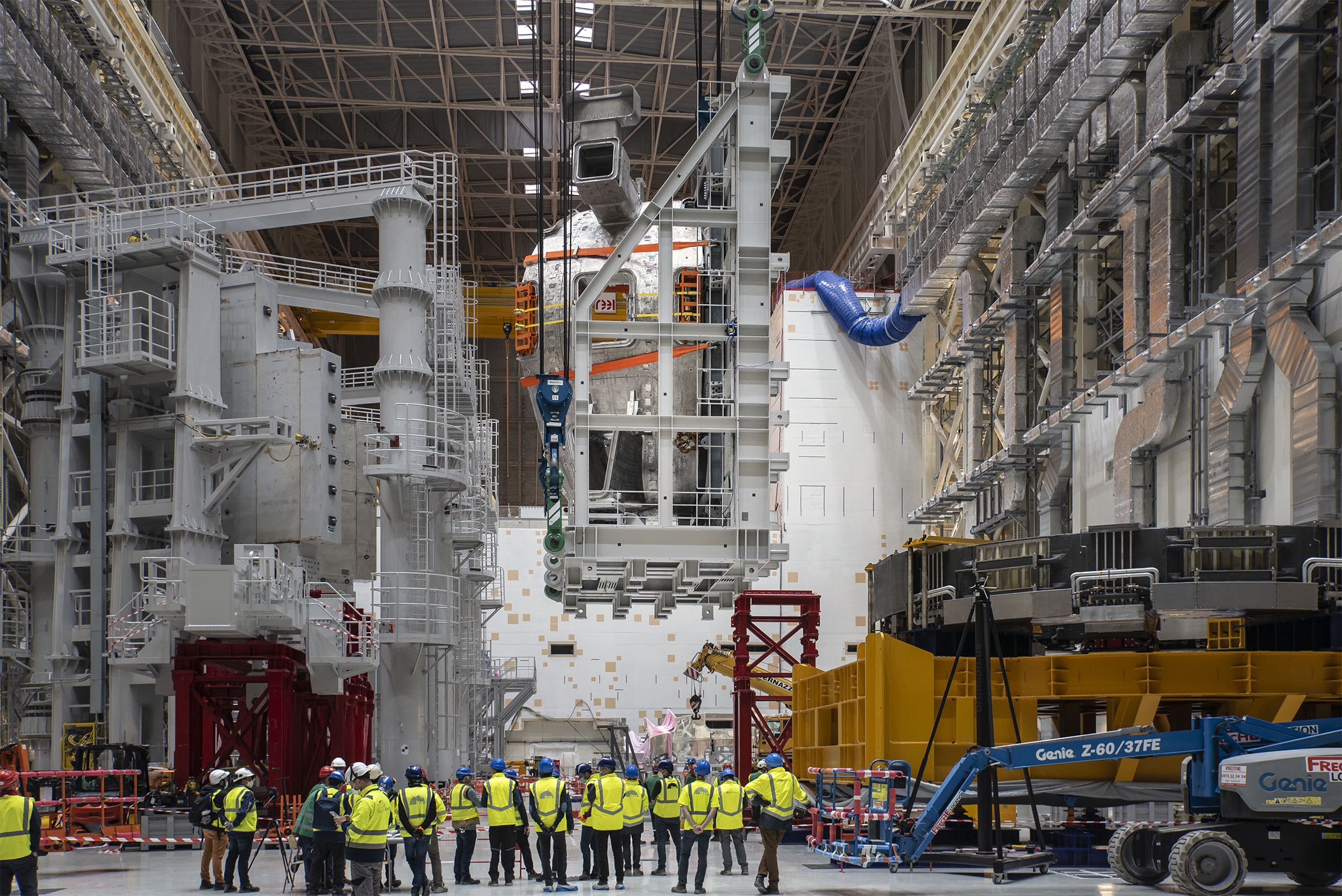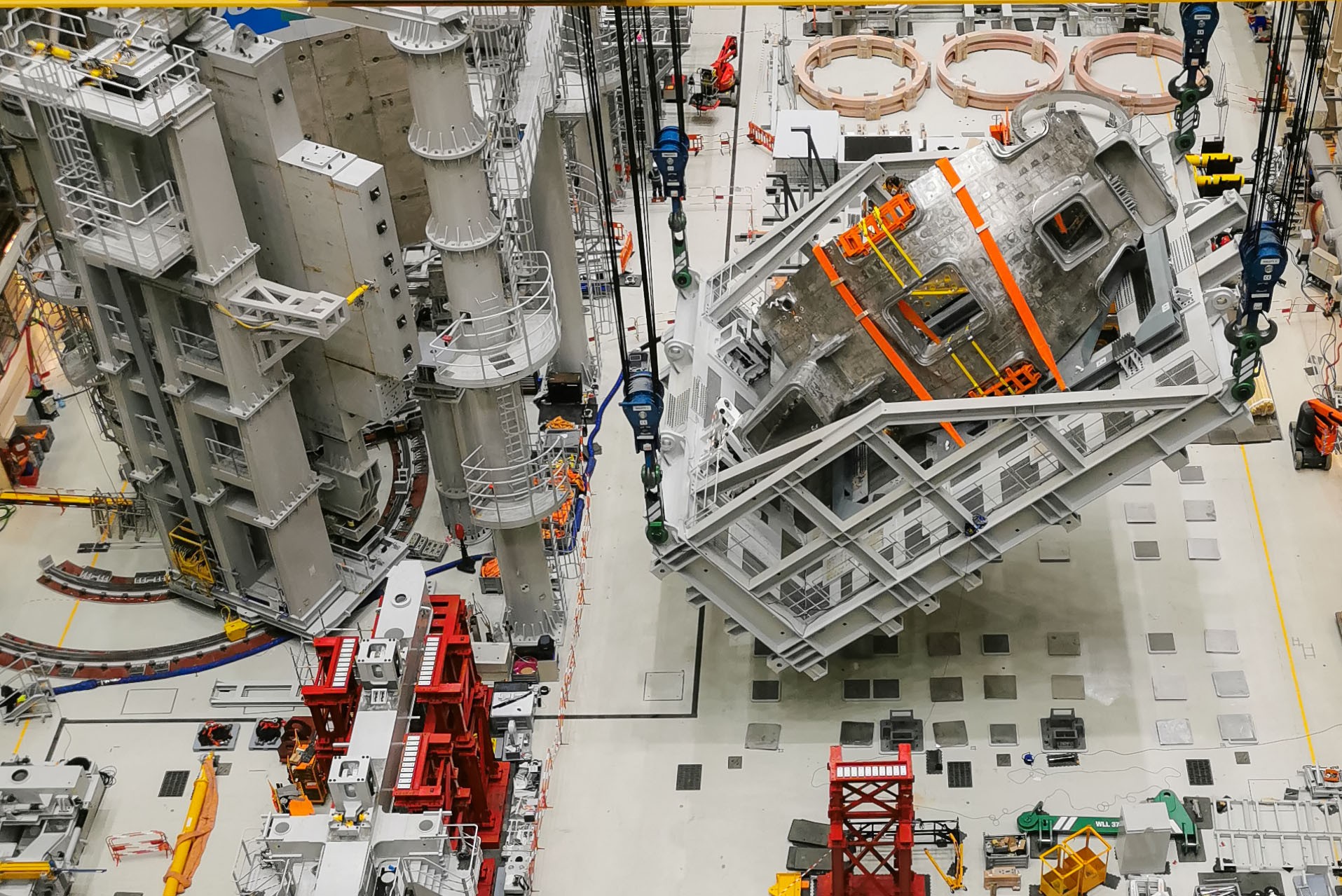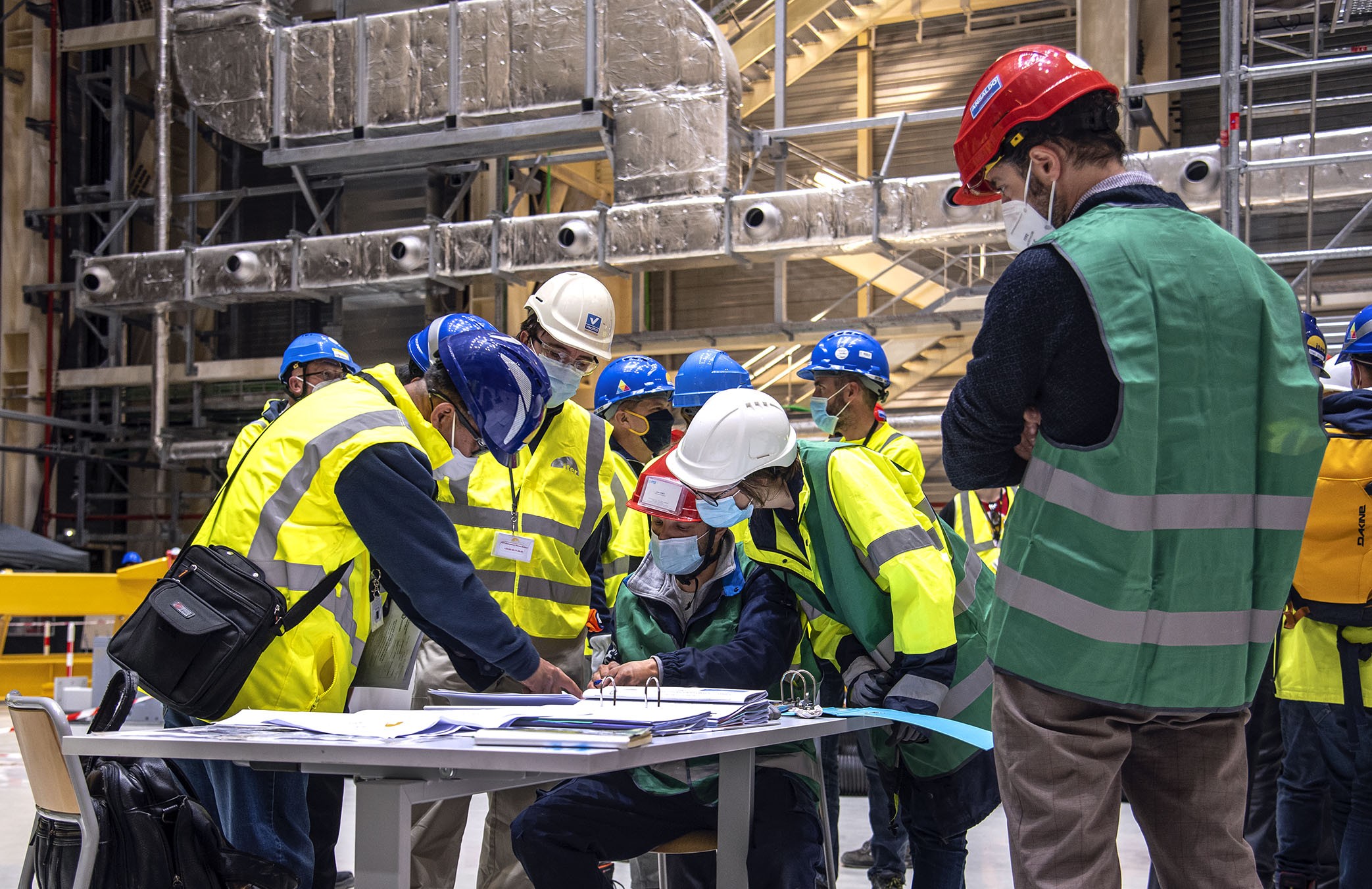A 90° tilt in mid-air
Ever since ITER entered the machine assembly phase, some ten months ago, we have been treated to a few spectacular lifting operations. In May 2020, we watched the cryostat base hover overhead like a flying saucer. In August 2020, the lifting of the cryostat lower cylinder seemed like another scene out of a science fiction movie. And earlier this year, there was magic in the air when the frail, silver-plated thermal shield slowly cruised through the hall, its mirror-like surface reflecting all the colours, lights and distorted shapes of the environment. Since Friday 26 March, another successful lift can be added to the list: the upending of the first vacuum vessel sector.
Among the small crowd of operators, experts and supervisors who watched the operation unfold, one man was particularly moved. Chang Ho Choi, the head of ITER Sector Modules Delivery & Assembly Division, remembered seeing workers cutting the steel plates for the first segments of vacuum vessel sector #6, in July 2011 at Hyundai Heavy Industries in Ulsan, Korea. "And now this big baby is standing up at last ..."
The "big baby" is a unique piece of high technology, a first-of-a-kind component if there ever was one. The first-of-series will be followed by eight other similar components (5 procured by Europe and 3 by Korea), to form the torus that will enclose the burning plasma—a steel container for a human-made star.
Drastic quality and schedule requirements were imposed throughout the fabrication process. "As the vacuum vessel forms the first confinement barrier of the ITER machine, the nuclear safety aspect is paramount," says Chang Ho. "Every weld—and there are 1.4 kilometres of them in one single sector—has to be checked by radiography and phase array ultrasonic testing."
Once delivered to ITER in August of last year, this unique industrial object was leak-tested by the ITER vacuum team and equipped with several hundred "bosses" to support the vast array of sensing devices that monitor the main electromagnetic parameters of the plasma. Here again, procedures were particularly strict and controlled by nuclear safety, quality and third-party nuclear inspectors.
For the tilt operation from horizontal to vertical, a very special cradle was devised. Weighing approximately 200 tonnes, the elements for the upending tool were delivered by Korea in late 2019, assembled with utmost precision, and tested with dummy loads weighing as much as a vacuum vessel sector.
All in all, preparation and rehearsals for last Friday's spectacular upending lasted almost one year. "Succeeding in this kind of complex operation is only possible if you plan, prepare and anticipate," explained ITER Tokamak Assembly Coordinator Robert Shaw. "It worked like a charm. We succeeded in one of the most delicate operations of the whole assembly process," added Alex Martin, head of the Vacuum Vessel Section as the massive component, now vertical, slowly touched down and settled into its waiting position.
The wait will not be long: within one week, if all goes as planned, vacuum vessel sector #6 will be placed on one of the twin sector sub-assembly tools to form the core of the first sub-assembly*.
*In ITER parlance, a "sector sub-assembly" is formed from one vacuum vessel sector, two toroidal field coils, and vacuum vessel thermal shielding. Once completed this sub-unit, weighing 1,200 tonnes, will be lowered into the assembly pit to be welded to other sector sub-assemblies.
Click here to view a time-lapse video of the upending operation.

